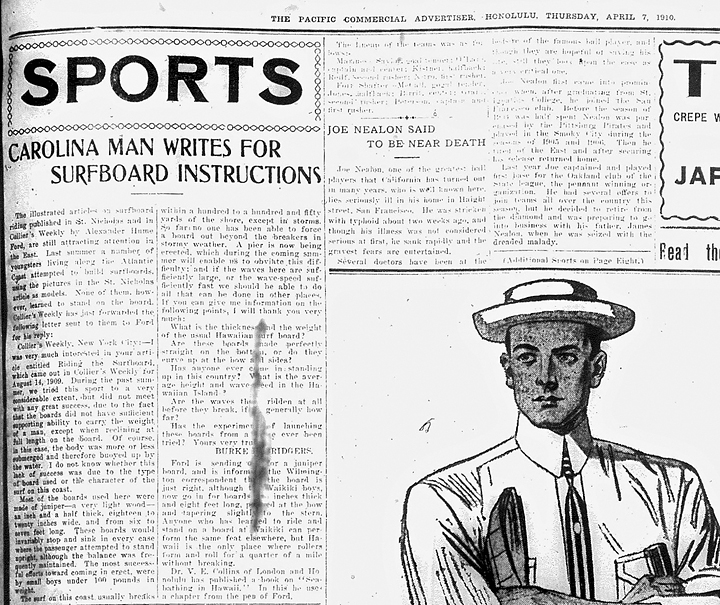In 1910, Wilmington resident Burke Haywood Bridgers read something in an edition of Collier’s Weekly that caught his attention. It was an article by native South Carolinian and pioneering surfer Alexander Hume Ford about the wave conditions and surfboard designs in Hawaii.
Joseph “Skipper” Funderburg, local historian and author of “Surfing on the Cape Fear Coast,” discovered Bridgers’ letter, which Funderburg said would rewrite the history of surfing on the East Coast.
“It hit the historic reset button because during that period of 1900-1910 there was extremely little known about surfing, particularly along the United States’ East Coast,” Funderburg said. “It was surreal to begin with and it took a few hours for it to actually sink in that, after years of research, I had found the documentation like that, and that it involved someone from Wrightsville Beach.”
In his letter to the Collier’s Weekly on April 2, 1910, Bridgers wrote that Hume’s article was attracting attention along the East Coast.
“During the past summer, we tried this sport to a very considerable extent, but did not meet with any great success, due to the fact that the boards did not have sufficient supporting ability to carry the weight of a man, except when reclining at full length on the board,” Bridgers wrote. “The most successful effort toward coming in erect were by small boys under 100 pounds in weight.”
Bridgers went on to write that most of the surfboards were made of juniper, and would stop and sink when its rider attempted to stand.
As for the surf conditions on the Cape Fear coast, Bridgers wrote, “The surf on this coast usually breaks within a hundred to a hundred and fifty feet off the shore, except in storms.”
In the conclusion of his letter, Bridgers asked detailed questions about the dimensions and shape of Hawaiian surfboards and about the Hawaiian wave conditions.
It was the depth of Bridgers’ questions that especially caught Funderburg’s eye, because scarcely any surfing information would have been available to Bridgers.
With no evidence of surfing on the East Coast predating Bridgers’ claim, Funderburg said the discovery should rewrite the history of surfing.
“Surfing made its informal debut on Wrightsville Beach more than 100 years ago in comparatively obscure surroundings,” Funderburg said. “This humble event could not possibly have provided the slightest clue of the worldwide popularity of the soon-to-be sport. Time, geography and culture all conspired to elucidate Mr. Bridgers’ wave riding abilities, making Wrightsville Beach the birthplace of surfing here, and on the U.S. East Coast.”
With the new discovery of Bridgers’ letter, Funderburg said he plans to continue his research into Bridgers and the events described.
email [email protected]




